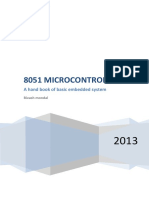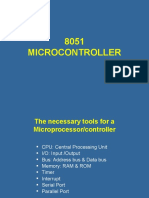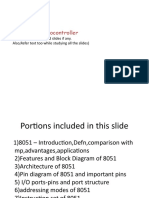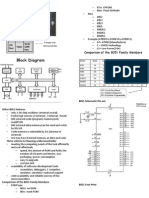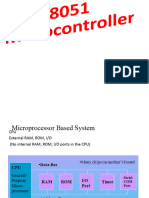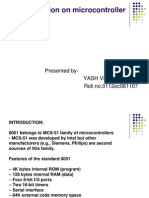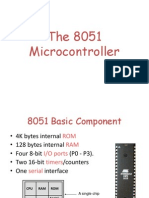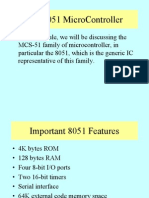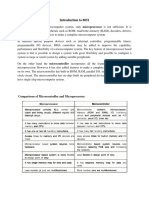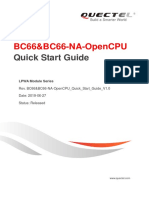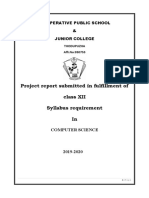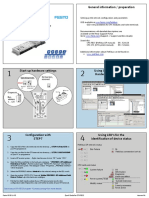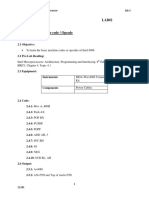0% found this document useful (0 votes)
49 views46 pages8051 Microcontroller
The document discusses the 8051 microcontroller. It provides details about the architecture, features, pin configuration and applications of the 8051 microcontroller. The 8051 is an 8-bit microcontroller introduced by Intel in 1981 and it has become very popular due to its on-chip memory and I/O ports.
Uploaded by
Sajid Hossain KhanCopyright
© © All Rights Reserved
We take content rights seriously. If you suspect this is your content, claim it here.
Available Formats
Download as PPTX, PDF, TXT or read online on Scribd
0% found this document useful (0 votes)
49 views46 pages8051 Microcontroller
The document discusses the 8051 microcontroller. It provides details about the architecture, features, pin configuration and applications of the 8051 microcontroller. The 8051 is an 8-bit microcontroller introduced by Intel in 1981 and it has become very popular due to its on-chip memory and I/O ports.
Uploaded by
Sajid Hossain KhanCopyright
© © All Rights Reserved
We take content rights seriously. If you suspect this is your content, claim it here.
Available Formats
Download as PPTX, PDF, TXT or read online on Scribd
/ 46






